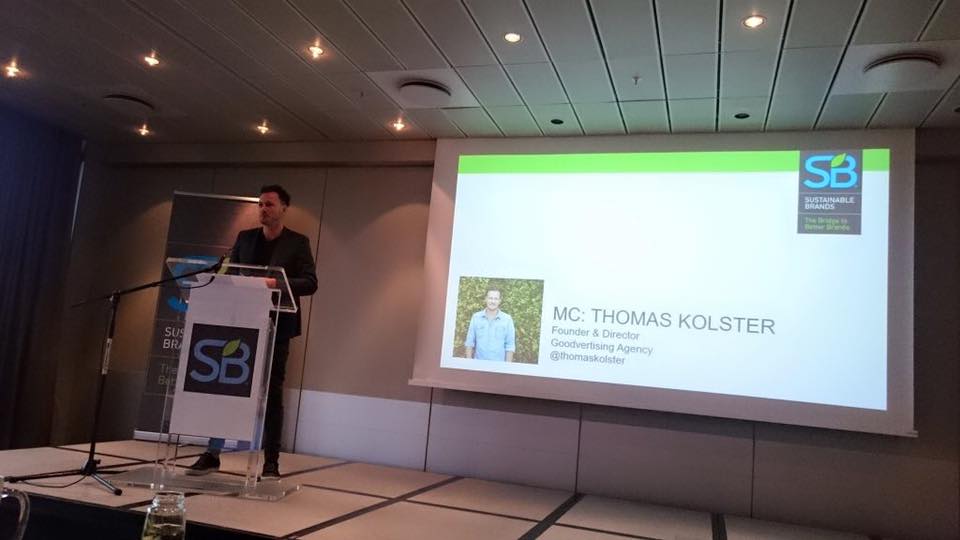Interview by Sustainable Brands
Last month Thomas Kolster, author of the critically acclaimed book, Goodvertising, compèred a packed SB’16 Copenhagen preview event featuring insights on Behavioural Economics from Krukow, the launch of a new sustainable packaging solution from Carlsberg and the announcement of a new circular-economy business direction for IKEA.
Following the event, I sat down with Kolster to get his views on his key focus areas for the year ahead, explore the changing role of ‘advertising for good,’ and discuss the sustainability landscape in Scandinavia, where Sustainable Brands’ new Northern European conference will take place later this year.
What do you think are the key themes in sustainability for this coming year?
I think breakthrough innovation is a term on everybody’s lips at the moment – in particular the merging of physical, digital and biological spheres. You only need to look at the success of companies like FitBit to see how that’s going to grow over the coming months.
Exploring new business models is another core topic. If you look at brands like BMW and Philips, they’re moving their focus away from products like cars and lightbulbs and towards services like mobility and illumination. Today’s consumers are far more independent – they’re able to print their own products and generate their own electricity – I think that is going to be both an opportunity and a challenge for businesses to adapt to.
Storytelling is one of the enduring themes that continue into this year. We’ve reached a point in time where the ability to communicate purpose is instrumental to the success of any new venture. In the past we’ve seen many great sustainability initiatives struggle because they weren’t communicated in a passionate and engaging way. Storytelling remains the fabric that facilitates and inspires change.
What are the opportunities and challenges particular to the Scandinavian region?
There are some amazing things happening in Scandinavia at the moment. In Denmark, particularly, the fashion industry is doing pioneering work around sustainability. We have the Copenhagen Fashion Summit happening in May, and the Danish Fashion Forum and Danish Textile Union have been working hard to try and improve transparency in the industry and tackle social and environmental problems.
However, I think one of the core challenges for the Scandinavian region is that culturally we’re quite a modest people, we don’t tend to brag about our successes. It’s something we call in Denmark ‘The Law of Jante’ and it’s all about being humble, not making a fuss. Along with the language barrier that exists with us and non-Dutch speaking nations, it can make talking about sustainability achievements difficult. A lot of times I go into Scandinavian businesses and see a treasure chest of good stories that haven’t been told.
What role will advertising play on the journey ahead?
No matter where we are – Denmark, Scandinavia or anywhere else in the world – we have an opportunity to learn from each other. The solutions are out there, we just need to scale them, and advertising can bring those stories to a wider audience.
Historically, advertising has also had the ability to shape trends, and I think that’s a responsibility we need to take far more seriously if we want to create widespread change. We can’t leave it up to consumers – as Henry Ford put it: If I had asked people what they wanted, they would have said faster horses.’
Encouragingly we’re already seeing some brands stepping up to that task. Take Chipotle for example, with their recent “Friend or Faux” campaign. I’m working on the next edition of Goodvertising, looking at the rise of these challenger brands, these mega-brands that go up against the narrative. I think the work they’re doing right now is planting the seeds for the brands of the future.

